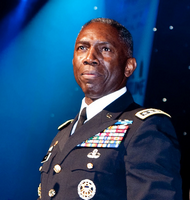U.S. plans to expand its military presence in Colombia have elicited predictable condemnations from anti-American elements in South America, but also concern from friends who see them as encroachment from our ongoing "war on drugs." Similarly, in another part of the world, Africa Command boss Gen. "Kip" Ward's repeated assurances that the United States isn't interested in setting up bases on the continent remains a tough sell, given the new regional combatant command's explicit mission to expand U.S. military cooperation there.
Critics are quick to call every new American boot on the ground "imperial overstretch," or "empire." But as often as we hear those buzz-phrases these days, to my mind they mischaracterize both the intent behind, and the actual evolution of, our nation's expanding overseas presence in the post-Cold War era.
To begin with, very little of this is new. The United States' global command scheme, now known as regional combatant commands, dates back to the Cold War. That it has grown more area-specific with time -- e.g., adding Northern Command and Africa Command -- simply reflects the increasing granularity of our efforts at promoting regional stability.

